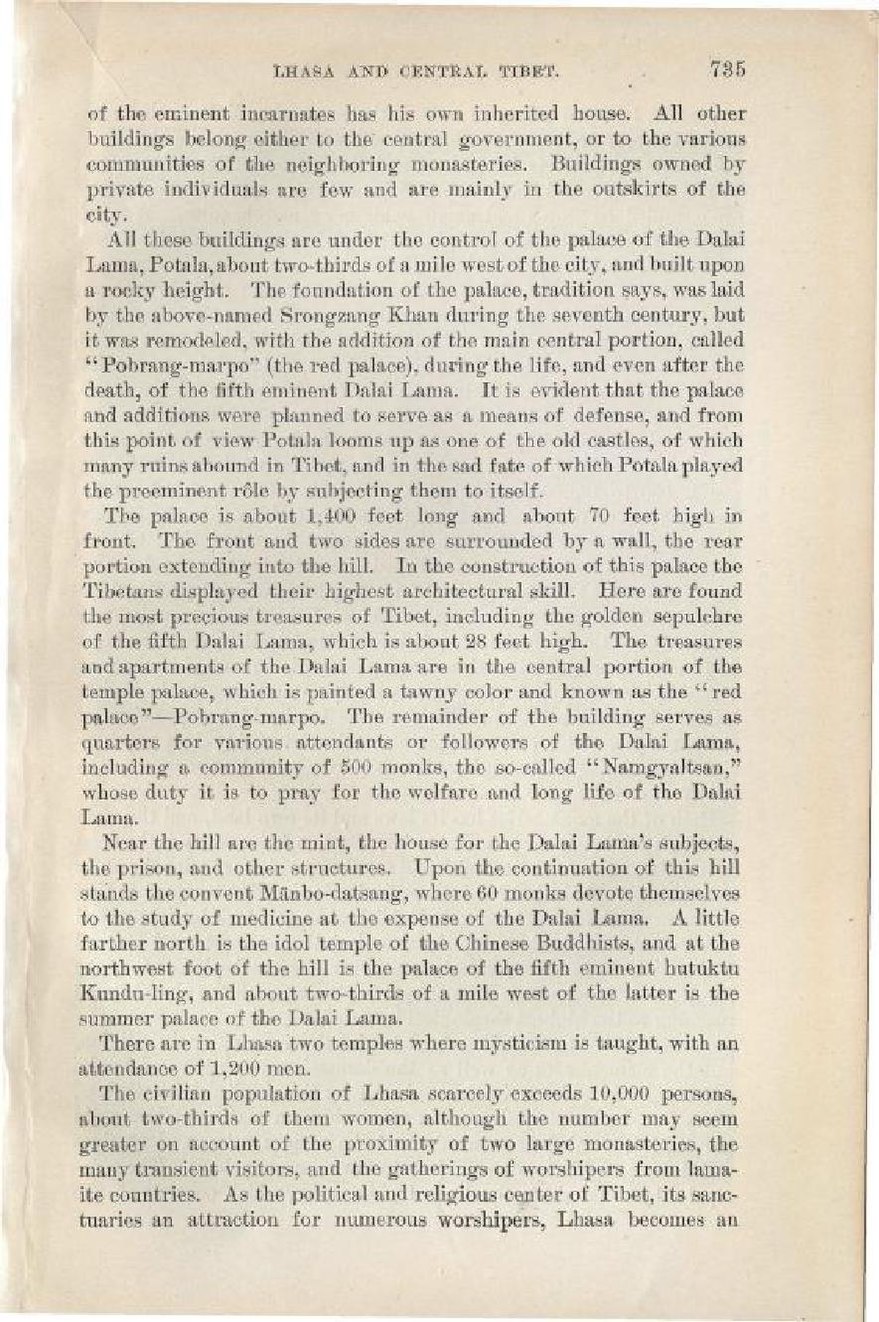of the eminent incarnates has his own inherited house. All other buildings belong either to the central government, or to the various communities of the neighboring monasteries. Buildings owned by private individuals are few and are mainly in the outskirts of the city.
All these buildings are under the control of the palace of the Dalai Lama, Potala, about two-thirds of a mile west of the city, and built upon a rocky height. The foundation of the palace, tradition says, was laid by the above-named Srongzang Khan during the seventh century, but it was remodeled, with the addition of the main central portion, called "Pobrang-marpo" (the red palace), during the life, and even after the death, of the fifth eminent Dalai Lama. It is evident that the palace and additions were planned to serve as a means of defense, and from this point of view Potala looms up as one of the old castles, of which many ruins abound in Tibet, and in the sad fate of which Potala played the preeminent role by subjecting them to itself.
The palace is about 1,400 feet long and about 70 feet high in front. The front and two sides are surrounded by a wall, the rear portion extending into the hill. In the construction of this palace the Tibetans displayed their highest architectural skill. Here are found the most precious treasures of Tibet, including the golden sepulchre of the fifth Dalai Lama, which is about 28 feet high. The treasures and apartments of the Dalai Lama are in the central portion of the temple palace, which is painted a tawny color and known as the "red palace" — Pobrang-marpo. The remainder of the building serves as quarters for various attendants or followers of the Dalai Lama, including a community of 500 monks, the so-called "Namgyaltsan," whose duty it is to pray for the welfare and long life of the Dalai Lama.
Near the hill are the mint, the house for the Dalai Lama's subjects, the prison, and other structures. Upon the continuation of this hill stands the convent Manbo-datsang, where 60 monks devote themselves to the study of medicine at the expense of the Dalai Lama. A little farther north is the idol temple of the Chinese Buddhists, and at the northwest foot of the hill is the palace of the fifth eminent hutuktu Kundu-ling, and about two-thirds of a mile west of the latter is the summer palace of the Dalai Lama.
There are in Lhasa two temples where mysticism is taught, with an attendance of 1,200 men.
The civilian population of Lhasa scarcely exceeds 10,000 persons, about two-thirds of them women, although the number may seem greater on account of the proximity of two large monasteries, the many transient visitors, and the gatherings of worshipers from lamaite countries. As the political and religious center of Tibet, its sanctuaries an attraction for numerous worshipers, Lhasa becomes an
